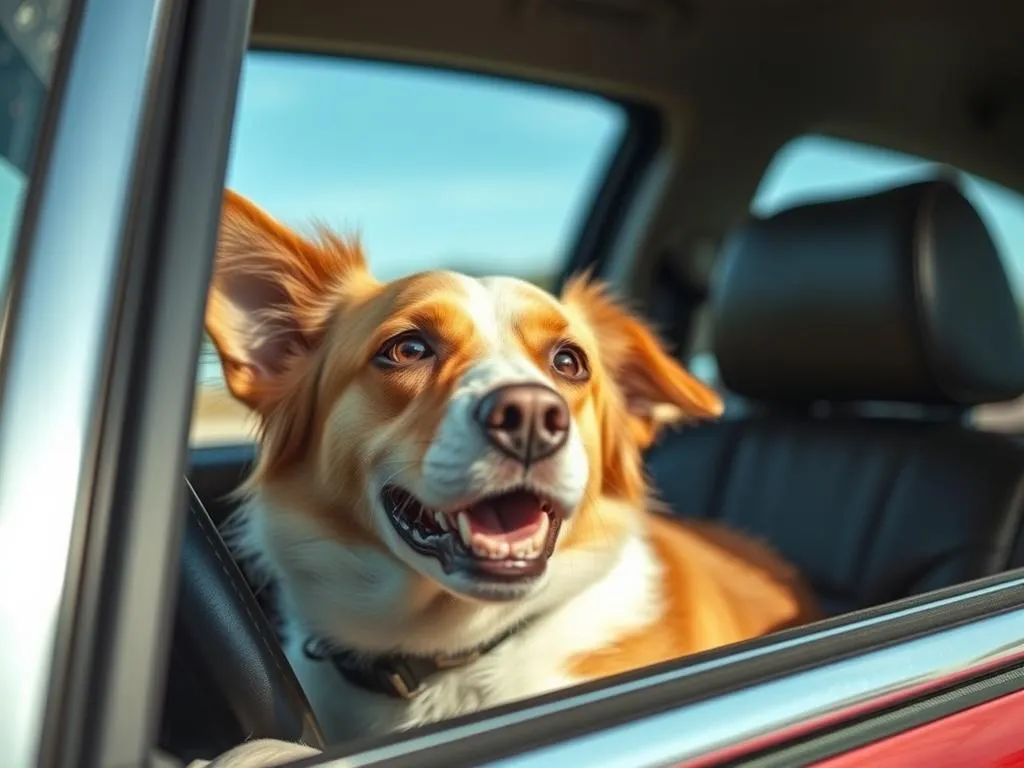
Introduction
When it comes to dog health care, one of the most pressing concerns is how our furry friends fare in extreme heat. Dogs are notoriously heat-sensitive, and their bodies are not as adept at regulating temperature as humans. In fact, a dog can suffer from heatstroke in temperatures as mild as 70°F (21°C) if left in a car. This post will delve into the dangers of leaving dogs in hot cars, the immediate actions you should take, prevention strategies, legal aspects, and how to get involved in community awareness.
The Dangers of Heat for Dogs
Understanding Canine Heatstroke
Heatstroke in dogs is a serious and potentially fatal condition caused by prolonged exposure to high temperatures. Dogs cool themselves primarily through panting, but in extreme heat, this method can become ineffective. Common symptoms of heatstroke include:
- Excessive panting
- Drooling
- Rapid heartbeat
- Lethargy
- Vomiting or diarrhea
It’s important to note that dogs can develop heatstroke much faster than humans due to their limited ability to sweat. Their fur can also trap heat, making it even more difficult for them to cool down.
Signs of Distress in Dogs
If you encounter a dog in a hot car, look for signs of distress that may indicate overheating. Common behaviors include:
- Excessive panting or difficulty breathing
- Restlessness or agitation
- Drooling more than usual
- Weakness or wobbliness
- Vomiting or passing out
Recognizing these signs quickly can make a significant difference in the dog’s chance of recovery.
Immediate Actions to Take
Assessing the Situation
Before jumping into action, it’s essential to assess the situation thoroughly. Check the dog’s condition by observing its alertness and breathing. Also, take note of the outside temperature. If it’s a hot day, the temperature inside a car can rise dramatically in a short period, often reaching dangerous levels within just a few minutes.
How to Safely Rescue a Dog from a Hot Car
If you determine that the dog is in distress, here’s a step-by-step guide on how to approach the situation:
- Stay Calm: Your calm demeanor can help you think clearly and act quickly.
- Try to Locate the Owner: If possible, ask nearby individuals if they know the owner. Many places have policies that allow you to make an announcement.
- Assess the Dog’s Condition: Look through the window to see how the dog is behaving.
- Consider Breaking a Window: If the dog is showing severe signs of distress and you cannot locate the owner, you may need to break a window to rescue the dog. Always choose a window that is furthest from the dog to minimize injury.
- Cool the Dog Down: Once you have the dog, move it to a shaded area and begin cooling it down with water. Avoid using ice, as it can constrict blood vessels and hinder cooling.
First Aid for Overheated Dogs
After successfully rescuing the dog, immediate first aid is crucial:
- Move to a Cooler Area: Get the dog out of the heat and into a shaded or air-conditioned area.
- Offer Water: Encourage the dog to drink cool (not cold) water.
- Apply Cool Water: Wet the dog with cool water, especially around the neck, underbelly, and between the paws.
- Monitor Temperature: If possible, use a rectal thermometer to check the dog’s temperature. A normal temperature is between 101°F and 102.5°F (38.3°C to 39.2°C). If the temperature exceeds 104°F (40°C), seek veterinary assistance immediately.
Prevention Strategies
Educating Dog Owners
Awareness is the first step in preventing heat-related incidences. Educating dog owners about the dangers of leaving dogs in cars is vital. Simple tips include:
- Never Leave a Dog Alone in a Car: Even for a short time, it’s best to leave your dog at home or take them with you when running errands.
- Use Pet-Friendly Services: Opt for businesses that allow dogs inside or provide outdoor accommodations.
Alternatives to Leaving Dogs in Cars
If you need to run errands, consider these alternatives:
- Pet-Friendly Establishments: Many cafes, shops, and restaurants are pet-friendly. Research local businesses that welcome dogs.
- Take Them Along: If you have errands to run, think about taking your dog with you—just ensure it’s safe and comfortable for them.
Using Technology for Safety
Technology can also play a role in keeping our pets safe:
- Pet Monitoring Gadgets: Devices that alert you to a significant temperature change in the car can be a lifesaver.
- Mobile Apps: Some apps can provide real-time alerts to help you monitor your pet’s environment.
Legal Aspects and Reporting
Understanding Local Laws
Laws regarding pets left in hot cars vary by location. Familiarize yourself with your local legislation. Many states have “Good Samaritan” laws that allow citizens to break into vehicles to rescue animals in distress without facing legal repercussions. However, it’s crucial to know the specifics, as consequences for leaving dogs in hot cars can range from fines to animal cruelty charges.
How to Report a Dog in Distress
If you encounter a dog in a hot car and cannot safely intervene, it’s important to contact the appropriate authorities. Here’s how to go about it:
- Call Animal Control: Report the situation to local animal control services or the police.
- Provide Detailed Information: When reporting, provide as much detail as possible, including the car’s make and model, license plate number, and the dog’s condition.
- Stay On-Site: Remain at the location until help arrives, if it is safe to do so. Your presence can provide valuable information to authorities.
Community Involvement and Advocacy
Spreading Awareness
Community outreach is vital in spreading awareness about the risks of leaving dogs in hot cars. Here are some effective strategies:
- Host Informative Events: Organize events that educate pet owners about heat safety.
- Use Social Media: Share posts and graphics that highlight the dangers of leaving dogs in cars.
Joining or Supporting Local Animal Welfare Organizations
Getting involved with or supporting local animal welfare organizations can amplify your impact. Here are some ways to contribute:
- Volunteer: Offer your time to local shelters or advocacy groups.
- Donate: Financial support can help organizations spread their message and provide resources for animal care.
Conclusion
In conclusion, understanding what to do if you see a dog in a hot car is crucial for any dog owner or animal lover. Recognizing the signs of heatstroke, acting swiftly to rescue a distressed dog, and knowing the legal implications can save lives. Education and community involvement are key to preventing heat-related incidents, ensuring our furry friends are protected from the dangers of heat. By taking these steps, we can foster a culture of responsible pet ownership and advocate for the health and safety of all dogs.









